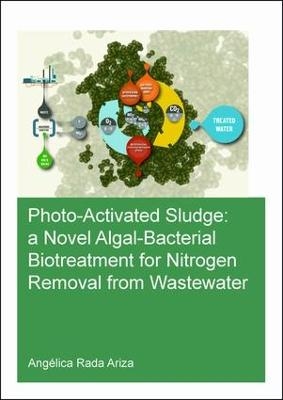
Photo-Activated Sludge: A Novel Algal-Bacterial Biotreatment for Nitrogen Removal from Wastewater
CRC Press (Verlag)
978-0-367-17886-4 (ISBN)
Nitrogen rich wastewaters (10-400 mg N L-1) are usually produced by municipal, industrial and agricultural wastes, such as effluents from anaerobic treatments. These represent a risk to the environment due to the high nutrient concentrations (nitrogen and phosphorous), which can cause eutrophication of water bodies, deteriorating the quality of the ecosystems. As a solution, the potential nitrogen removal capacity of a novel bio-treatment system, namely the Photo-Activated Sludge (PAS), which is composed of microalgae and bacteria consortia, is presented in this thesis. This novel bio-treatment is based on the symbiosis between microalgae, nitrifiers and heterotrophic bacteria (microalgal-bacterial consortia). Experimental work using photobioreactors for the cultivation of microalgae and bacteria under sequencing batch conditions showed that microalgal-bacterial consortia can remove ammonium 50% faster than solely microalgal consortia. The increase in ammonium removal rates was due to the action of nitrifying bacteria, supplied with oxygen produced by algae. Nitrification was the main ammonium removal mechanism within the microalgal-bacterial biomass, followed by algal uptake and nutrient requirements for bacterial growth. Carbon oxidation and denitrification were the main removal mechanisms for organic carbon. Hence, the role of algae within the microalgal-bacterial system is to provide oxygen to support the aerobic processes. The microalgal-bacterial system offers the possibility of reducing the hydraulic retention time, which can decrease the large area requirements often demanded by algal systems.
Angelica Rada was born in Santa Marta, Colombia. She is a Civil Engineer (2008) form the Universidad Nacional de Colombia (Bogota). She worked as civil engineer in Colombia in different projects during 2008 and 2010 in the area of hydraulics and environmental technology. In 2012, she successfully completed her MSc. studies on sanitary engineering and municipal water and infrastructure. Angélica enrolled as PhD fellow between 2013 - 2018 in the Environmental Engineering & Water Technology department at UNESCO - IHE, Delft, and Wageningen University. Her PhD research focused on the treatment of ammonium rich wastewater using microalgal-bacterial consortia. Over the past nine years, she has worked with a team of experts on wastewater treatment, environmental technologies, sanitation techniques and civil engineering activities in Colombia and The Netherlands inside and outside academia. This has helped her to develop different abilities on a technical and personal level as a civil and sanitary engineering working in the field of environmental biotechnology.
1 General introduction
2 Microalgal-bacterial consortia for wastewater treatment a review
3 Nitrification by microalgal-bacterial consortia for ammonium removal in a flat panel sequencing photobioreactor
4 Ammonium removal mechanisms in a microalgal-bacterial sequencing-batch photobioreactor at different SRT
5 Modelling of nitrogen removal using a microalgal-bacterial consortium
6 Modelling of nitrogen removal using a microalgal-bacterial consortium under different SRTs
7 Respirometric tests for microalgal-bacterial biomass: modelling of nitrogen storage by microalgae
8 Conclusions and recommendations
| Erscheinungsdatum | 03.04.2019 |
|---|---|
| Reihe/Serie | IHE Delft PhD Thesis Series |
| Verlagsort | London |
| Sprache | englisch |
| Maße | 170 x 240 mm |
| Gewicht | 640 g |
| Themenwelt | Naturwissenschaften ► Geowissenschaften ► Hydrologie / Ozeanografie |
| Technik ► Umwelttechnik / Biotechnologie | |
| ISBN-10 | 0-367-17886-9 / 0367178869 |
| ISBN-13 | 978-0-367-17886-4 / 9780367178864 |
| Zustand | Neuware |
| Haben Sie eine Frage zum Produkt? |
aus dem Bereich


